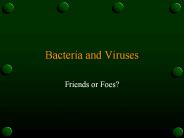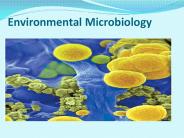Phototrophic PowerPoint PPT Presentations
All Time
Recommended
Some chemical is produced in the tip and transmitted down the stem to ... 2, 4-D and 2,4,5-T are herbicides for broad-leaved plants at very low concentrations. ...
| PowerPoint PPT presentation | free to view
Phototrophic Bioreactor Fermentor Temperature controlled Temperature sensor pt1000 Fast reaction time Temperature profiles Cooling and heating system From 5 to 70 ...
| PowerPoint PPT presentation | free to view
Reducing power is generated in the form of NADPH. Carbon Assimilation Reactions (aka the 'dark ... Cacti, succulents, orchids, etc. (where water is limited) ...
| PowerPoint PPT presentation | free to view
Chemotrophs Rely on Phototrophs. Aerobic Respiration (chemotrophic energy metabolism) ... C6H12O6 6O2 6CO2 6H2O. C's of glucose are released to atmosphere ...
| PowerPoint PPT presentation | free to view
Utilizing Phototrophic Bacteria Micro-Bac International, Inc. Round Rock, TX Innovation This SBIR project resulted in a new system for the treatment of wastewater ...
| PowerPoint PPT presentation | free to download
This system requires no aeration, uses sunlight as an energy source, and does ... This large petrochemical firewater lagoon was successfully treated with the ...
| PowerPoint PPT presentation | free to download
Phototrophic. Picoplankton (PP) c. a. e. d. b. beads. beads. beads. 90o light scatter. 90o ... Comparison of phototrophic picoplankton (PP) counts made using ...
| PowerPoint PPT presentation | free to view
The following make up what; radio waves, microwaves, Infra red, visible, ultra ... Phosphorescence. Phototrophic. Fluorescence. Radiation. Question 8 ...
| PowerPoint PPT presentation | free to view
Survival and response Aim: To understand the responses animals and plants make in order, to increase their chance of survival What changes in the environment do ...
| PowerPoint PPT presentation | free to view
Similarity between Bchl g and Chlorophyll a (modified form of hydroxychlorophyll ... peach: Bchl b containing cells of Thiocapsa ...
| PowerPoint PPT presentation | free to view
Plant Hormones Plant growth regulators What does a plant need to respond to in its environment? Light Water Gravity How are plant growth factors different from animal ...
| PowerPoint PPT presentation | free to view
Title: Pr sentation PowerPoint Author: DV Last modified by: blanchot Created Date: 4/26/2001 8:22:30 PM Document presentation format: Affichage l' cran
| PowerPoint PPT presentation | free to view
Ethanolic fermentation 2 pyruvate + 2 NADH - 2 ethanol + 2 CO2 Recap of Fermentations, cont. Respiration Aerobic Respiration In aerobic respiration, ...
| PowerPoint PPT presentation | free to view
Introduction to molecular biology of the cell. Haixu Tang. School of Informatics ... as Biochemical Factories Dealing with the Same Basic Molecular Building Blocks ...
| PowerPoint PPT presentation | free to download
Objective To be able to describe the main features of bacterial cells and to understand the different nutritional and metabolic types. References
| PowerPoint PPT presentation | free to download
GEO 135 Introduction to Geochemistry Greg Druschel 321 Delehanty Hall Gregory.Druschel@uvm.edu Course Goals At the end of this course You will be able to utilize ...
| PowerPoint PPT presentation | free to download
The mechanism for evolutionary adaptation of populations to ... The finches on the Gal pagos islands. Tree of Life. Microbial life on early earth. Stromatolites ...
| PowerPoint PPT presentation | free to view
Bacteria and Viruses Friends or Foes?
| PowerPoint PPT presentation | free to download
Chapter 27 Prokaryotes and the Origins of Metabolic Diversity
| PowerPoint PPT presentation | free to view
The directional growth of plant organs in response to a directional environmental stimulus ... Thermotropism - temperature. Aerotropism - oxygen. Skototropism - dark ...
| PowerPoint PPT presentation | free to view
Fermentation: Catabolism of carbon in the absence of a terminal electron acceptor (like O2) for electron transport chain Photosynthesis and Autotrophy I ...
| PowerPoint PPT presentation | free to download
rod shaped, Gram negative, lophotrichous. chemoheterotrophs. Pseudomonas ... Sulfolobus (hot springs of Yellowstone National Park) - oxidizes sulfur ...
| PowerPoint PPT presentation | free to view
Environmental microbiology is the study of microbial processes in the environment, microbial communities and microbial interactions. This includes: Structure and activities of microbial communities Microbial interactions and interactions with macroorganisms Population biology of microorganisms Microbes and surfaces (adhesion and biofilm formation) Microbial community genetics and evolutionary processes (Global) element cycles and biogeochemical processes Microbial life in extreme and unusual little-explored environments
| PowerPoint PPT presentation | free to download
Organization of an anoxygenic photosystem in the bacterial membrane ... Methanogens may be autotrophic or organotrophic. obligate anaerobic archaea. Fermentation ...
| PowerPoint PPT presentation | free to view
Nitrogen in the form of Dinitrogen (N2) makes up 80% of the ... Actinomycetes (Gram , filamentous); septate hyphae; spores in sporangia; thick-walled vesicles ...
| PowerPoint PPT presentation | free to view
Title: 1 Author: okamoto Last modified by: FJ-USER Created Date: 5/20/2003 11:21:09 PM Document presentation format: (4:3)
| PowerPoint PPT presentation | free to view
WordSkills: Lesson Eight ...
| PowerPoint PPT presentation | free to view
The Microbiology of Bioremediation and Biodegradation. By Puan N Abdullah. Energy Requirements ... Organisms are divided into major categories according to ...
| PowerPoint PPT presentation | free to view
oyster effects on flagellates -grazing of 20um ciliates. Acknowledgements. REU/ NSF Oyster Reef Study. Dr. Eric Koepfler and Dr. Alan Lewitus. for guidance ...
| PowerPoint PPT presentation | free to view
Microbial Ecology Microbial Ecology the interactions of m.o. with the biotic and abiotic components of the environment The importance of these interactions and their ...
| PowerPoint PPT presentation | free to download
Plants Classifying Plants: 2 Main Groups of Plants: A. Nonvascular: have no vessels, no roots, no stems or leaves. Examples: Mosses & Liverworts
| PowerPoint PPT presentation | free to view
Plants Chapters 22-25 Flowering plants Cone-bearing plants Ferns and their relatives Flowers; Seeds Enclosed in Fruit Mosses and their relatives *FYI: GREEN ALGAE is ...
| PowerPoint PPT presentation | free to download
probably will never prove how life began. have narrowed down possibilities ... they became surrounded by a coacervate or protenoid microsphere (this would be ...
| PowerPoint PPT presentation | free to download
1. Why is 16S rRNA such a good molecule for making phylogenetic trees (give ... Need flavin mononucleotide, aliphatic aldehyde, O2, and enzyme. E- donor is NADH ...
| PowerPoint PPT presentation | free to view
Mushroom Cultivation For Everyone Tradd Cotter Mushroom Mountain, LLC Quote Mushroom Poem Quote Mushroom Poem Quote Mushroom Poem Log and Stump Cultivation Spawn Run ...
| PowerPoint PPT presentation | free to view
If the bacteria possesses a cell capsule, it will retain a pink color. ... live in hot, acidic environments such as hot springs and hydrothermal ...
| PowerPoint PPT presentation | free to download
Title: Lecture 2: Bacterial Polymerization Author: Greg Marczynski Last modified by: Shixue Yin Created Date: 8/10/2002 9:34:05 PM Document presentation format
| PowerPoint PPT presentation | free to view
All possible habitats are exploited by some sort of prokaryote ... Actinomyces. Nocardia. Streptomyces. Actinomycetes. Figure 11.17. Gram-Negative Proteobacteria ...
| PowerPoint PPT presentation | free to view
Plant Growth Regulators AKA Plant Hormones Plant Growth Regulators - control growth, development and movement
| PowerPoint PPT presentation | free to view
Title: PowerPoint Presentation Author: THunt Last modified by: THunt Created Date: 10/8/2004 11:57:02 PM Document presentation format: On-screen Show
| PowerPoint PPT presentation | free to view
Photosynthesis and the origin of life. Hartman H. IASB, ... The origin and evolution of photosynthesis is considered to be the key to the origin of life. ...
| PowerPoint PPT presentation | free to view
Wide variety of habitats and behaviors ... Live in harsh environments: oxygen free, salt lakes, hot ... Sterilization is crucial to surgical instruments ...
| PowerPoint PPT presentation | free to view
PROKARYOTES 20.2 Introduction to Prokaryotes First discovered by Anton van Leeuwenhoek in 1683 (invention of light microscope) Are prokaryotes No nucleus Exist ...
| PowerPoint PPT presentation | free to view
Indigenous Water Microorganisms: Species of microorganisms that exist in water ... water) phyto and zooplankton, fungi, ultramicrobacteria or nanomicrobacteria ...
| PowerPoint PPT presentation | free to view
Title: No Slide Title Author: The Weber Family Last modified by: rabideau Created Date: 5/28/1995 4:18:48 PM Document presentation format: On-screen Show
| PowerPoint PPT presentation | free to download
Title: PowerPoint Presentation Author: kleypas Last modified by: joan kleypas Created Date: 1/16/2003 9:14:20 PM Document presentation format: On-screen Show
| PowerPoint PPT presentation | free to view
The study of how microorganisms interact with each other and with their ... 2) Top up with lake, pond or sea water. 3) Cap loosely and grow in muted sunlight ...
| PowerPoint PPT presentation | free to view
Diseases: tetanus, botulism, gonorrhea, chlamydia, tuberculosis, etc., etc., etc. ... Diseases: tetanus, botulism, gonorrhea, chlamydia, tuberculosis, etc. ...
| PowerPoint PPT presentation | free to view
Plant Hormones 101 MUPGRET Workshop What are hormones? a group of naturally occurring organic compounds that influence physiological processes at low ...
| PowerPoint PPT presentation | free to view
Chapter 6 Microbial Nutrition and Metabolism Concepts Microorganisms require about 10 elements in large quantities, in part because they are used to construct ...
| PowerPoint PPT presentation | free to view
Title: Slide 1 Author: MARTIN HUSS Last modified by: MHUSS Created Date: 4/12/2006 10:58:09 PM Document presentation format: On-screen Show Company
| PowerPoint PPT presentation | free to view
Jeopardy Pictures Tissues Control System Pot Pouri Structure Q $100 Q $100 Q $100 Q $100 Q $100 Q $200 Q $200 Q $200 Q $200 Q $200 Q $300 Q $300 Q $300 Q $300 Q $300
| PowerPoint PPT presentation | free to download
Do not have a membrane-bound nucleus ... Tadpole. Many sided (helical or cube-like) Viruses. D. Vary in size (20 - 400 nanometers) ...
| PowerPoint PPT presentation | free to view
Lack specialzed organelles as seen in eukaryotes. Have ... CELL WALL (though it is not made of cellulose like plant cell walls) ... YES/NO: FACULTATIVE ANEROBES ...
| PowerPoint PPT presentation | free to view
























































